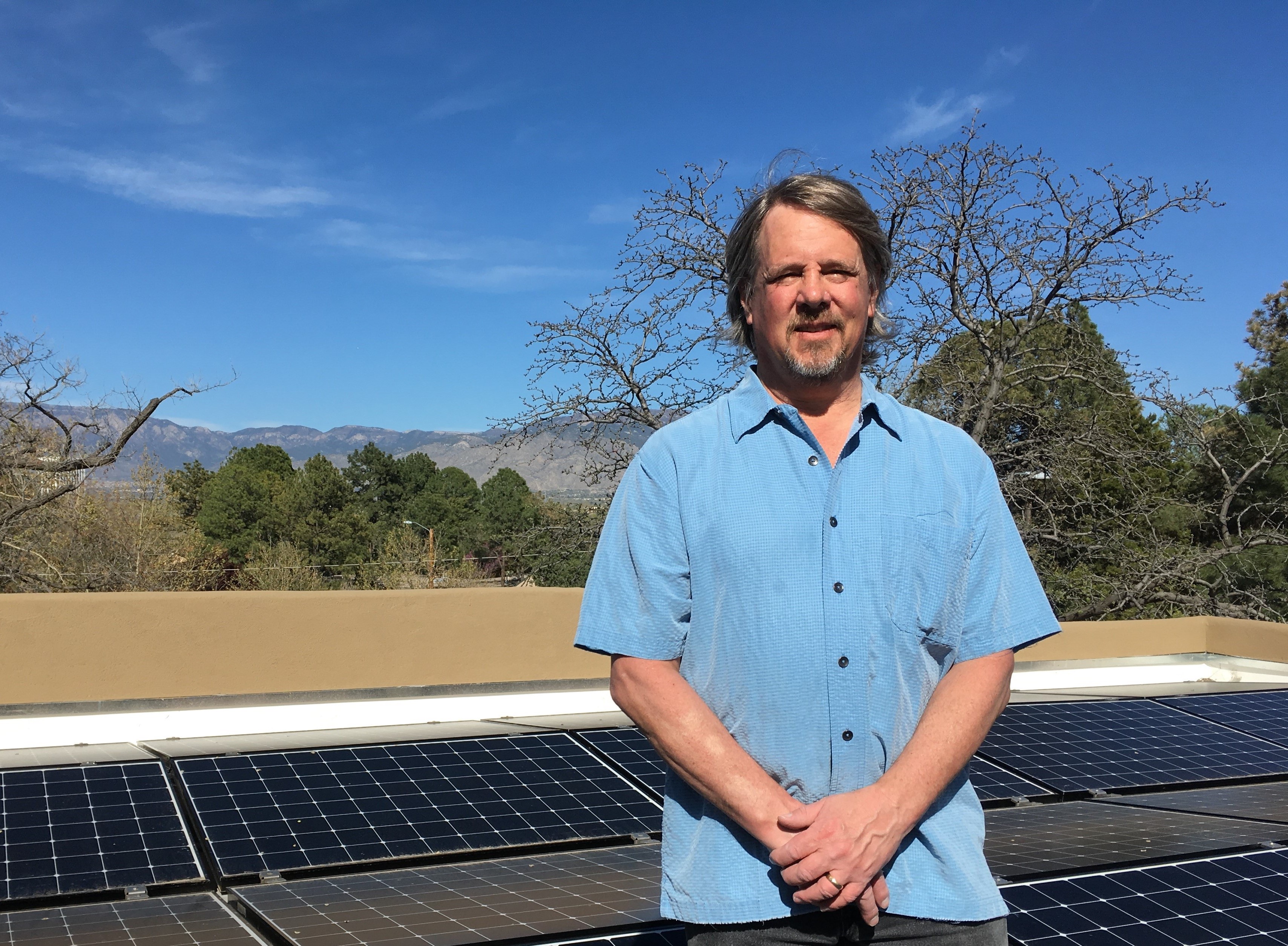North Slope of Alaska Staff Members to Swap Roles
Published: 16 September 2019
Joe Hardesty will become site manager while Mark Ivey slides over to science liaison

Some personnel changes are coming at the Atmospheric Radiation Measurement (ARM) user facility’s North Slope of Alaska (NSA) atmospheric observatory.
At the end of fiscal year 2019, Joe Hardesty and Mark Ivey, colleagues at Sandia National Laboratories in New Mexico, will trade their NSA job titles.
Hardesty will take over for Ivey as the site manager for the NSA and the third ARM Mobile Facility (AMF3) at Oliktok Point, Alaska. Ivey, the NSA site manager for 13 years, will step into Hardesty’s role as the NSA science liaison.
The transition also means that Hardesty will replace Ivey on ARM’s Infrastructure Management Board (IMB). The IMB works with the U.S. Department of Energy to manage ARM, with input from the research community and ARM staff.
This succession plan has been in place for a couple of years, with Hardesty gradually assuming more operational responsibility from Ivey and joining in on the IMB’s weekly calls.
“He’s been backing me up, and we’ll trade places, and I’ll back him up,” says Ivey. “We’re trying to make it as easy and bump-free as we can.”
A Career Not Entirely by Design
Hardesty’s multifaceted career background was what originally connected him to ARM. In addition to his PhD in chemical engineering from Stanford University, he is a registered architect.
After getting his bachelor’s degree in architecture and urban planning from the University of Illinois at Urbana-Champaign, Hardesty spent 20 years as a full-time architect. He worked on commercial and institutional projects such as schools, prisons, laboratories, hospitals, universities, shopping centers, and semiconductor fabrication plants for Intel.

At Sandia, where Hardesty has worked since getting his PhD in 2008, he has been involved with international chemical and biological security projects, infrastructure resilience, decontamination research, energy systems, and the lab’s arctic science and security initiative.
In 2010, Ivey asked Hardesty if he could help communicate and coordinate planning and design efforts with an architecture and engineering firm upgrading the NSA facilities at Barrow (now known officially as Utqiaġvik).
“I was able to go up to Barrow and gained a real appreciation for arctic research in general and the ARM team and the operations being performed up there,” says Hardesty.
A few years later, Ivey enlisted Hardesty’s help during the design work for AMF3, which was constructed at Oliktok in October 2013. Hardesty officially joined the ARM team at Sandia in late 2015.
In addition to providing logistical support for field campaigns, he has been a crew member on tethered balloon flights and served on the ARM Unmanned Aerial Systems Advisory Group overseen by Ivey and ARM Aerial Facility Manager Beat Schmid. He also advised and reviewed the development of new operations and approval guidelines for unmanned aerial systems and tethered balloon systems within ARM.
Moving Parts

The Arctic presents unique—but not insurmountable—challenges for a facility.
“I still find it really interesting with regards to how we have to accommodate the changes of conditions there and the demands that the environment places on the systems,” says Hardesty.
In his new position, Hardesty has a facility move on the horizon. AMF3 is leaving Oliktok for an as-yet-undetermined location in the Southeastern United States by the end of fiscal year 2021.
Sandia colleague Fred Helsel, who manages the Barrow and Oliktok ARM sites, is identifying major steps to get ready for the move. Modifications to AMF3 have been discussed in part.
“First we have some seasonal constraints in terms of when we can demobilize and get out of Oliktok, and then trying to overlay that with what we want to do to accomplish setting up the new site,” says Hardesty. “So, as I get more involved, I’ll start working with (Helsel) on that as well.”
The NSA team is also focused on providing measurements from Barrow and Oliktok that will support the data sets from two major arctic field campaigns in FY20. The Multidisciplinary Drifting Observatory for the Study of Arctic Climate (MOSAiC) begins in September 2019. The Cold-Air Outbreaks in the Marine Boundary Layer Experiment (COMBLE) starts in January 2020.
Institutional Knowledge
“Everything pointed to the idea that this was the right time to make the shift. He’s ready, and I’m ready. So off we go.”
Mark Ivey, outgoing North Slope of Alaska site manager
Ivey spent two years as the NSA operations manager before taking over from Bernie Zak as the NSA site manager in 2006.
“Especially when I first became site manager, I would go up and spend a couple weeks at a shot,” says Ivey. “That’s OK, but after a while, it gets old for my home crowd. My wife was ready for me to travel a little bit less.”
As science liaison, Ivey will use his expertise and familiarity with the NSA to help communicate with different stakeholder groups. He expects to keep working with government partners such as the Air Force, Bureau of Land Management, and National Oceanic and Atmospheric Administration.
Ivey and Hardesty have worked diligently to make sure the management transition is as seamless as possible. Even so, says Hardesty, “everybody’s so used to Mark. He’s so great to work with, so it’s a hard act to follow.”
Swapping jobs with Hardesty will also give Ivey more time to focus on arctic initiatives that are ramping up at Sandia.
“Everything pointed to the idea that this was the right time to make the shift,” says Ivey. “He’s ready, and I’m ready. So off we go.”
Please welcome Ivey and Hardesty to their new roles. Congratulations!
Keep up with the Atmospheric Observer
Updates on ARM news, events, and opportunities delivered to your inbox
ARM User Profile
ARM welcomes users from all institutions and nations. A free ARM user account is needed to access ARM data.


















